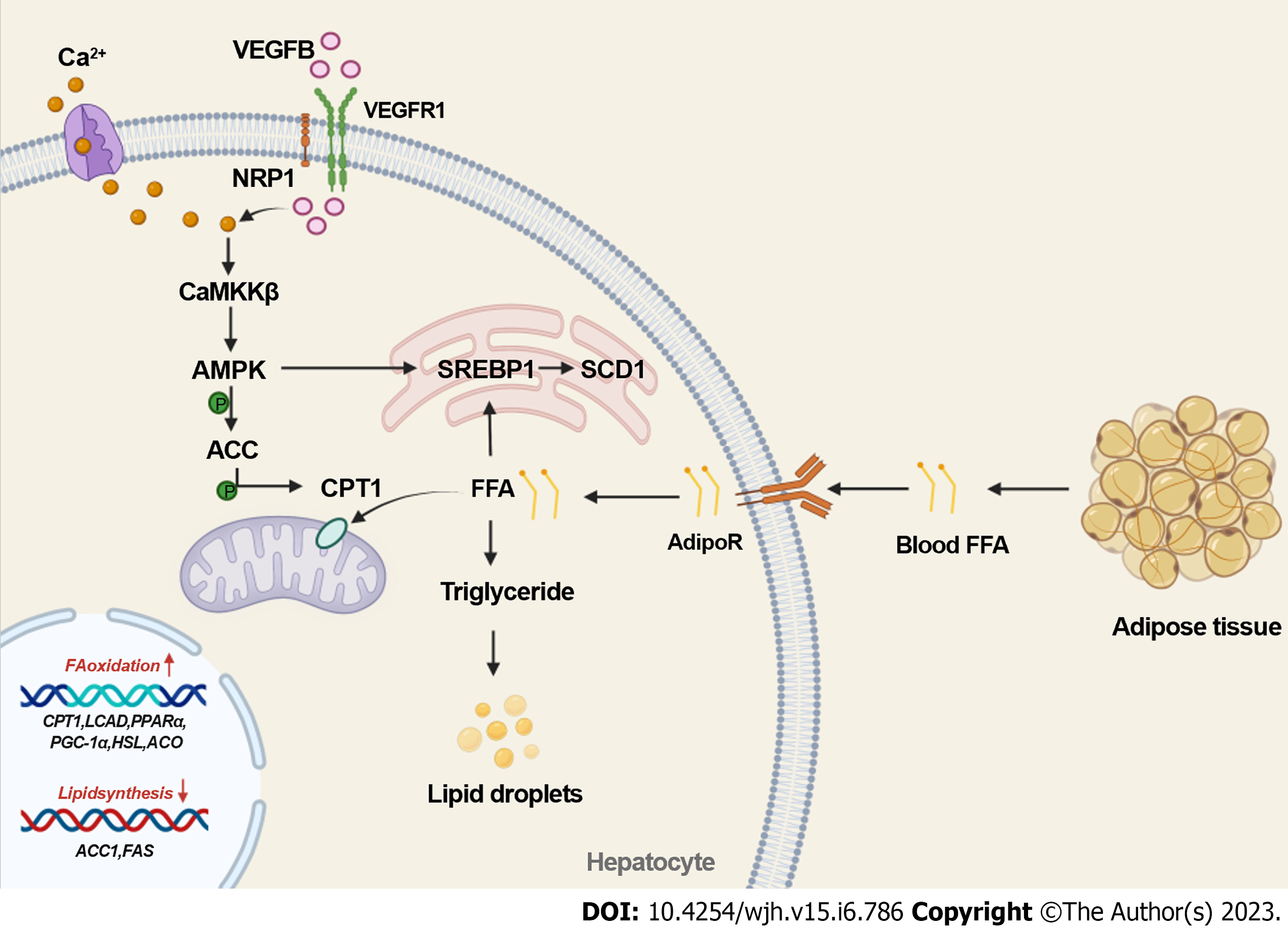Copyright
©The Author(s) 2023.
World J Hepatol. Jun 27, 2023; 15(6): 786-796
Published online Jun 27, 2023. doi: 10.4254/wjh.v15.i6.786
Published online Jun 27, 2023. doi: 10.4254/wjh.v15.i6.786
Figure 3 Vascular endothelial growth factor B regulates lipid metabolism in the “first hit” of nonalcoholic fatty liver disease via the activated protein kinase signaling pathway.
Vascular endothelial growth factor B (VEGFB) performs its biological function by combining with VEGFR1. Once it enters the cell, it activates Calmodulin-dependent protein kinase β (CaMKKβ), which is induced by an increase in intracellular Ca2+ content. VEGFB activates the CaMKKβ-mediated activated protein kinase (AMPK)/A carboxylase (ACC)/carnitine palmitate transferase (CPT1) signaling pathway and related genes, such as CPT1 and long-chain acyl coenzyme A dehydrogenase, which regulate FFA oxidation in mitochondria. VEGFB activates AMPK/SREBP1/SCD1 and related genes, such as ACC1 and FAS, to inhibit lipid synthesis in the endoplasmic reticulum. CaMKKβ: Calmodulin-dependent protein kinase β; AMPK: Adenosine 5’-monophosphate (AMP)-activated protein kinase; ACC: A carboxylase; CPT1: Carnitine palmitate transferase-1; FFA: Free fatty acid; NRP1/2: Neuropilin 1/2; SCD1: Stearoyl-CoA desaturase-1; SREBP1: Sterol-regulatory element-binding protein-1; VEGFB: Vascular endothelial growth factor B; VEGF: Vascular endothelial growth factor; VEGFB: Vascular endothelial growth factor B; FAS: fatty acid synthase; ACO: Acyl Coenzyme A Oxidase; HSL: hormone-sensitive lipase; LCAD: long-chain acyl-CoA dehydrogenase; PPARα: proliferator-activated receptor-α; PGC-1α: peroxidase proliferator activator receptor γ coactivator 1α.
- Citation: Li YQ, Xin L, Zhao YC, Li SQ, Li YN. Role of vascular endothelial growth factor B in nonalcoholic fatty liver disease and its potential value. World J Hepatol 2023; 15(6): 786-796
- URL: https://www.wjgnet.com/1948-5182/full/v15/i6/786.htm
- DOI: https://dx.doi.org/10.4254/wjh.v15.i6.786









